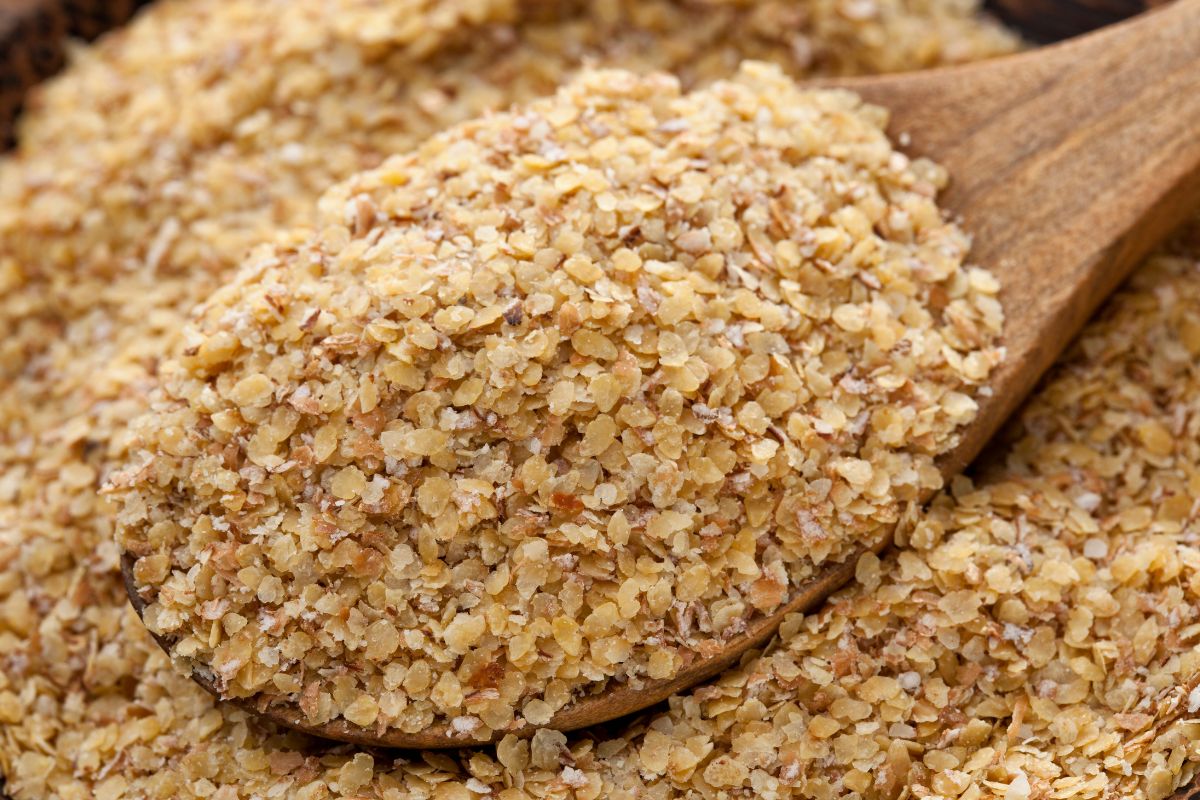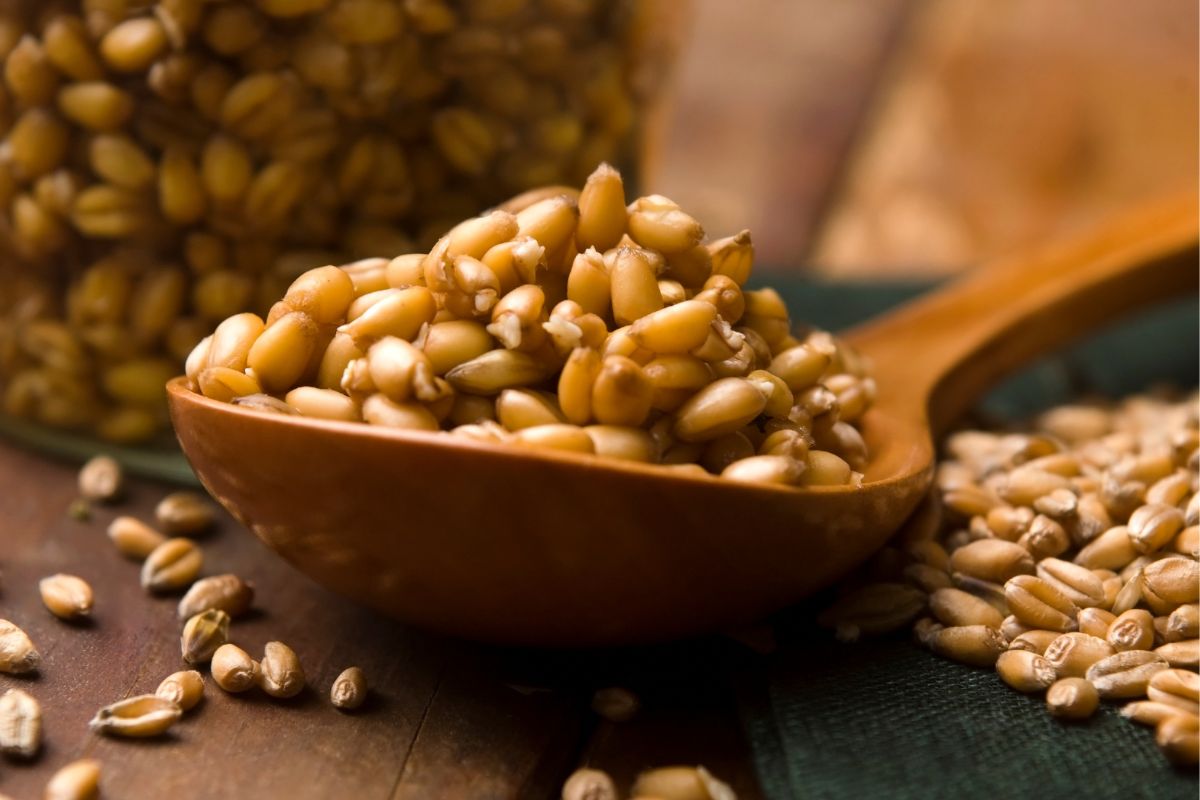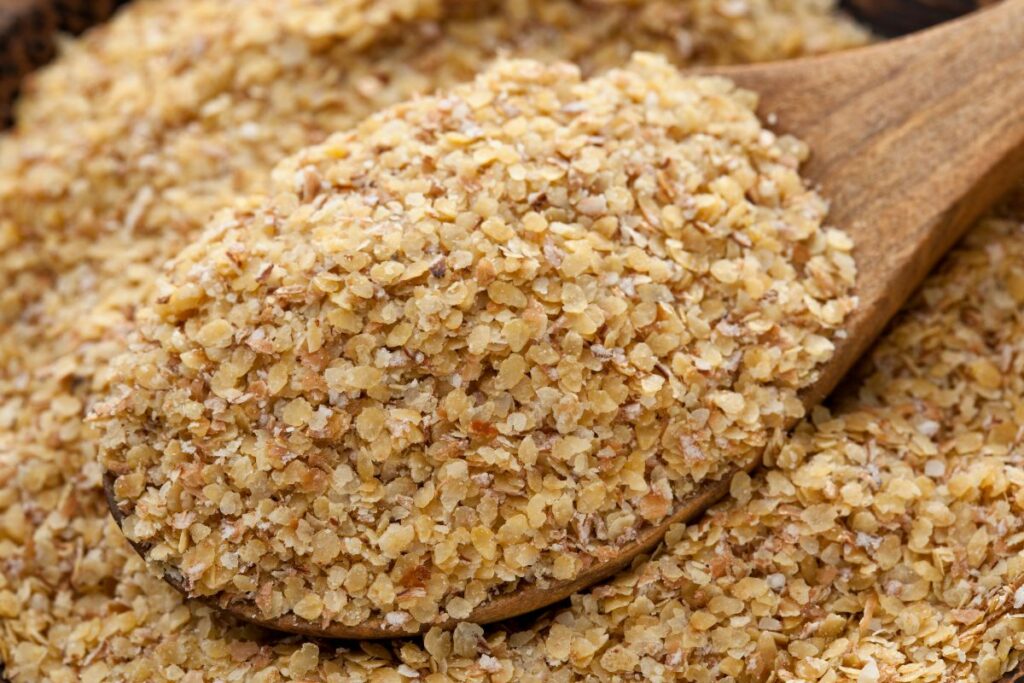Wheat is a popular cereal grain that has been used for hundreds of years. It is primarily used to make flour, which is then used in various recipes in baking.
We might all be familiar with regular wheat, but what about wheat germ?

In short, wheat germ is part of a wheat kernel that’s responsible for reproducing and spawning new wheat.
It is added to a number of popular food items, and has a number of health benefits.
If you want to find out more about wheat germ, you’re in the right place. Here, we’re going to go through everything you need to know.
What Is Wheat Germ?
Wheat germ is one of the parts of a wheat kernel. This part is responsible for helping the wheat reproduce.
In most processed wheat products, wheat germ is actually removed.
The germ, as well as the husk, are removed from all refined wheat products such as white flour. This allows the products to store longer and have a longer shelf life.
Although it gets removed in many cases, wheat germ is also added to food products. Some cereals, granola, and cornbread.
Not only that, but wheat germ is also popular to put on foods such as yogurt, fruit pies, ice cream, and cereals.
In many cases, it is seen as a healthy alternative to things like breadcrumbs, and is even used in things like meatloaf, meatballs, and breading for a variety of meats.
Wheat germ can be bought raw, in gelcap, or liquid form. It is often used as a nutritional supplement and a food additive for the nutritional benefits.
Does Wheat Germ Have Nutritional Benefits?
According to the experts, wheat germ is a great food supplement because of its nutritional value.
There are vegetable proteins, healthy fats and fiber present, as well as thiamin, potassium, zinc, folate, phosphorus, and magnesium.
There’s also healthy levels of vitamin E present, which have antioxidant properties.
The EFSA has suggested that wheat germ oil is able to help control cholesterol levels.
However, there are a number of other bold claims that require more evidence to back up. We will take a look at these in the section below.
Other Potential Benefits Of Wheat Germ

Aids Digestion
Because wheat germ is high in dietary fiber, it can help maintain good digestion.
Dietary fiber is essential for the body to have healthy and regular bowel movements. Without enough fiber, issues such as constipation may occur.
Helps Maintain Healthy and Natural Body Functions
We need a wide variety of minerals in order to maintain healthy body functions. Although wheat germ doesn’t contain all the minerals we need, it’s a good place to start.
In wheat germ, we can find zinc, magnesium, phosphorus, and manganese, among other things. These are all essential things that the human body needs to stay healthy.
- Zinc – helps strengthen the immune system to fight viruses
- Magnesium – helps boat the immune system and helps keep bones and the heart strong
- Phosphorus – helps to grow and repair tissues with the help of calcium
- Manganese – helps maintain the immune system and keeps bones healthy
Reduces The Risk Of Cardiovascular Disease
Because wheat germ contains a substance known as phytosterols, it can help keep the cardiovascular system healthy.
Phytosterols help in lowering the amount of cholesterol that the body absorbs due to their shape.
They can prevent the intestines from absorbing bad cholesterol, which can then lower the risk of developing cardiovascular diseases and suffering from heart attacks.
Boosts Your Immunity
The high vitamin E levels in wheat germ is another beneficial factor.
Vitamin E is an antioxidant, which helps to protect the substances in the body that contain fat, such as brain cells and cell membranes.
This vitamin can help protect them from damage, which can be caused by free radicals within the body.
When these fat-containing substances are attacked, they can lead to things like heart disease and cancer.
Supports Stronger Muscles
Because of all the protein in wheat germ, it can help you maintain and build muscles.
This plant-based protein isn’t only great for building and maintaining muscle, but it also helps to repair muscles.
There are a number of crucial body functions that rely on protein entering the body. As such, this is a good option for protein intake, especially for those who don’t consume meat.
Boosts Energy Levels
The essential vitamins found in wheat germ, such as thiamin, folate, and B vitamins, make it great for energy.
These vitamins help to turn the fat and carbohydrates in your body into energy that you then use.
Does Wheat Germ Have Any Side Effects?
Kidney Stones
As wheat germ has high levels of oxalate, too much of it can cause kidney stones.
Oxalate is a waste product compound made by the body, and wheat germ contains around 10 milligrams of oxalic acid in every tablespoon.
Allergic Reactions
Aggluten is found in wheat germ – a type of protein that is linked to wheat allergies.
This means that even people with mild wheat allergies could experience worse symptoms after eating small amounts of whole-grain products.
These allergies can easily be triggered by just eating wheat germ, because the wheat germ agglutinate is found in the germ.
How Much Wheat Germ Should You Have?
Knowing how much wheat germ to take is very important, as too much can lead to painful kidney stones.
It’s generally recommended to have only one tablespoon of wheat germ a day. That way, you can experience all the benefits without the potential side effects.
You can take dietary supplements, or use raw germ on things like yogurt or cereal in the morning.
Final Thoughts
Wheat germ is part of the whole wheat kernel, which is often removed during processing. This part of the kernel is responsible for spawning new wheat and helps the plant reproduce.
Germ is known to have a number of nutritional benefits, but too much of it can lead to issues such as kidney stones.
To enjoy the benefits of wheat germ, sprinkle a tablespoon of raw germ on your morning yogurt or cereal.








